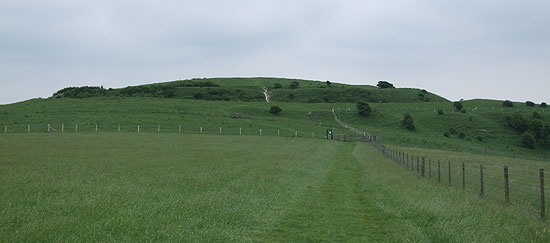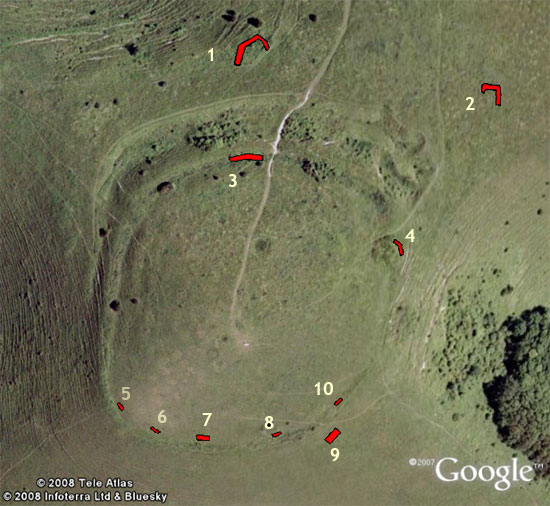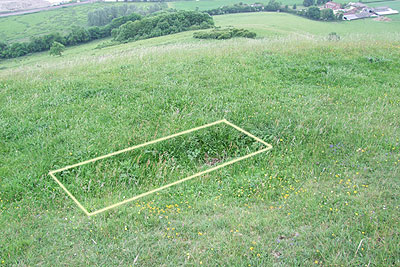Mount Caburn
Posted: 12 October 2008 22:25
I've paid a couple of visits to Mount Caburn this year to investigate the wartime slit trenches that were dug on the ramparts of this iron age hillfort.
Caburn is the pinnacle of the high ground overlooking Glynde and is a strong defensive position, approachable from the north, but with steep slopes on the other three sides. The refortification of the site demonstrates that securing the high ground is a military strategy as valid in 1941 as it was 2,500 years ago.

The locations of the trenches are given in Marking time and making space: excavations and landscape studies at the Caburn hillfort (Drewitt and Hamilton, 1999).
I've plotted the approximate locations of the trenches in Google Earth, seen below.


The trenches have all been filled in, although they can be seen if you know where to look; they've not been excavated archaeologically.
Unfortunately, they don't show up very well, hence the highlighting in the photo - the revetted trenches that still survive elsewhere are far more photogenic.
Read the section in Marking time and making space... entitled: The World War II features on the Caburn by Cliff Sampson; he states that his comments are:
"based on the typology and layout of the features of this site and not on eyewitness accounts or excavation evidence."
I would hold up his analysis of the defences as an example of how to interpret the landscape in the absence of other sources; from the disposition of the earthworks he describes the possible fields of fire and dead ground, discusses the weapons of the period, infantry organisation and the wider scheme of defences such as the stop lines formed by the River Ouse and Cuckmere River.
This sort of appraisal is exactly what is all too often missing from the study of anti-invasion defences - too many studies simply list defence works and focus on their type and variant rather than analysing why there are where they are and how the fit into the bigger picture.
- Pete

Email:
Blog Latest

Bishopstone reveals its pillbox secrets
18 October 2021

Pillbox or Observation Post?
10 June 2020

Uncovering the hidden secrets of a pillbox
8 June 2019

Review of 2018
31 December 2018

Wartime Christmas in East Sussex (2)
24 December 2018
Jargon-buster
Slit trench
Small, narrow trench designed to provide protection against shrapnel and other battlefield hazards. Technically distinct from a weapon pit (which was intended soley as a defensive position) slit trenches were also used as defence works.
Stop line
A physical continuous anti-tank barrier, normally a river and/or railway line, often defended by pillboxes. Stop line crossings (roads, railways and bridges) were to be made impassable.
This site is copyright © Peter Hibbs 2006 - 2024. All rights reserved.
Hibbs, Peter Mount Caburn (2024) Available at: http://pillbox.org.uk/blog/216571/ Accessed: 27 July 2024
The information on this website is intended solely to describe the ongoing research activity of The Defence of East Sussex Project; it is not comprehensive or properly presented. It is therefore NOT suitable as a basis for producing derivative works or surveys!